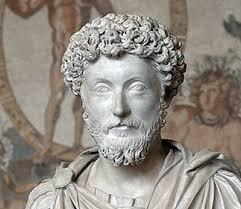The Best Response to an Insult Involves an Ancient Philosophy
Curated from: forge.medium.com
Ideas, facts & insights covering these topics:
5 ideas
·27.6K reads
44
Explore the World's Best Ideas
Join today and uncover 100+ curated journeys from 50+ topics. Unlock access to our mobile app with extensive features.
Stoicism and insults
In ancient Greece and Rome, the Stoics (philosophers that taught the value of emotional resilience) advised their devotees to let insults go.
The Stoics weren’t pushovers, they just knew that not all insults were created equal. And most importantly, they knew how to decide which ones to ignore and which to take to heart.
1.14K
5.95K reads
1.55K
8.43K reads
Not all insults are created equal
The Stoics viewed an insult from a trusted friend or mentor as something that would benefit them, a real occasion for self-improvement that should be received with gratitude.
You should pay extra attention to the input of the people you respect, because they have some important insights about you. An insult from someone you respect is an insult informed by experience, and it should be careful considered, even if it’s painful.
1.39K
4.83K reads
Put yourself in your critic's shoes
Question your assumptions about your critic's intention. Insults are not always meant to be harmful insults are designed to be harmful. The line between an insult and a piece of well-intended constructive criticism is almost always subjective.
Thus, to soften the impact of an insult, put yourself in your critic's brain and ask: What were they trying to accomplish with that comment?
1.2K
3.96K reads
Accept that you have flaws
To absorb more fully what’s being said about you and really read it as an opportunity for self improvement, work to diminish sensitivity to your own imperfections.
This means you have to accept the idea that you have flaws, and that sometimes, people are going to point them out.
1.24K
4.41K reads
IDEAS CURATED BY
Gabrielle G.'s ideas are part of this journey:
Learn more about communication with this collection
Conflict resolution
Motivating and inspiring others
Delegation
Related collections
Similar ideas
4 ideas
The False Promise of Stoicism
newideal.aynrand.org
2 ideas
Do NOT to be a Stoic (but try Nietzsche instead)
theconversation.com
Read & Learn
20x Faster
without
deepstash
with
deepstash
with
deepstash
Personalized microlearning
—
100+ Learning Journeys
—
Access to 200,000+ ideas
—
Access to the mobile app
—
Unlimited idea saving
—
—
Unlimited history
—
—
Unlimited listening to ideas
—
—
Downloading & offline access
—
—
Supercharge your mind with one idea per day
Enter your email and spend 1 minute every day to learn something new.
I agree to receive email updates


